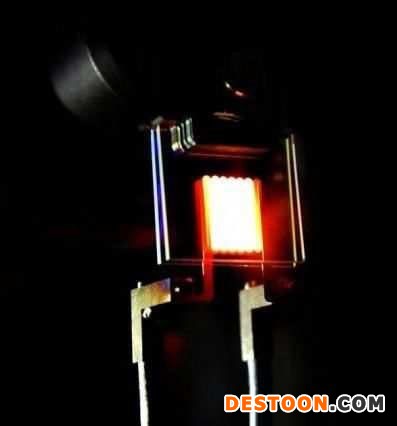Innovative research into the addition of re-radiative nanostructures to flat incandescent lamps can bring reborn opportunities to this classic but inefficient light source?
Whenever you see an old incandescent light bulb, there is always a feeling of sentimentality and pity. It once symbolized a technological miracle that brought safe, efficient lighting to the world and changed the society more completely. However, it is now being ridiculed as an inefficient "energyhog" that seems to be a bad thing invisibly.
Under the dual pressures of energy costs and regulatory orders, incandescent bulbs have little room for change, and the position in most consumer and commercial applications has gradually been replaced by energy-saving bulbs such as compact fluorescent lamps (CFLs) and increasing numbers of LEDs . It is. However, incandescent lamps are still favored by many specific applications. Nowadays, it is reasonable to eliminate incandescent lamps because its efficiency is only 2%-3%, while CFL (about 7%-15%) and LED (about 5%-20%) are several times more efficient. .
That's why I'm extremely interested in a recent study at the Massachusetts Institute of Technology (MIT). A research team at MIT has conducted important research to improve the performance of incandescent bulbs, and has also completed proof of concept. To put it simply, the researchers added a secondary structure of photonic crystals around the filament to capture the energy and reflect it back into the filament, thus letting the non-emissive radiant energy not be wasted as heat dissipated. This allows it to be repeatedly absorbed like visible light and then fired (as shown below).

MIT researchers create a proof-of-concept device that shows a two-stage process that increases the efficiency of incandescent bulbs
To date, MIT researchers have been able to achieve an illumination efficiency of 6.6% for incandescent bulbs, which is about 2 to 3 times higher than typical incandescent bulbs. It is worth noting that the "filament" they use is not a conventional tungsten wire, but a flatter tungsten filament sheet to facilitate laser cutting to the right size.
However, does this design allow incandescent bulbs to return to the mass market with their original gloss and color temperature? Of course, I am not sure. Even with this research and development success, there are huge and difficult ways to go from laboratory prototypes, small-scale production to mass market and low-cost production. In addition, passive and active electronic component suppliers will continue to invest huge capital during this period, making CFL and LED a more viable alternative.
In many ways, the ultimate commercialization of this technology research is not the focus of discussion. One of the characteristics of these studies is that we never know where they will lead. Because the path of progress is not linear, the predictable process can easily be inferred. MIT researchers have brought advances in materials science to operate in the high temperature range (3,000K) and have many features.
In addition, we also know that the development of a certain area (even a dead end) will often become another basis for innovation in other areas. After all, who would have thought of revealing the spin of the molecule in the quantum solid layer, and eventually became the principle of creating a large number of organs and tissue images in the human body with a magnetic resonance imaging (MRI) system? These are not direct paths from one research to another!
Moreover, just because a technology is outdated - like an incandescent lamp - does not mean that it will always go on like this. Technological changes and advancements can provide incentives to revisit and revitalize old technologies. I remember many years ago, I had to go to the hospital for a few stitches because of minor injuries. I later found that the doctor who helped me to suture the wounds also conducted advanced research at Harvard Medical School - they used water sputum to accelerate wound healing and coagulation. And study how to control and evaluate its effects. This technique was actually used hundreds of years ago, but it was later abandoned by civil society for various reasons. (Fortunately, I didn't know his research work at the time, but I didn't take it as a subject!)
Do you want to see incandescent bulbs have a chance to shine again? Do you think that other technologies that have been "obsolete" have disappeared after a period of time and then "reproduce the rivers and lakes" with a new look?
LED Business Network led to focus on e-commerce platform to promote led enterprises + Internet, the official website http://
Usb Connector,Micro Usb Sinking Connector,Usb 3.0 Solder Connector,Double Layer Usb Connector
Dongguan Yangyue Metal Technology Co., Ltd , https://www.yyconnector.com